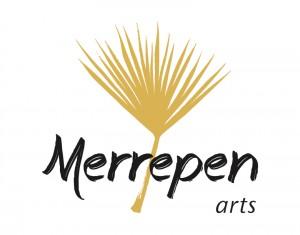How Ngan'gi is related to other languages
There are two views we could take here. The indigenous perspective of Ngan’gi speakers is based on a perception of unchangedness, viewing relationships between people, country and language as being timeless. The western approach to linguistics as a science views languages as always changing, and includes a subfield of historical and comparative linguistics that seeks to understand how languages have changed over time, what their descent from earlier forms involved, and which other languages they are related to. The Ngan’gi linguist Patricia McTaggart and the Anglo-Australian linguist Nick Reid have always been happy to have these two perspectives co-exist.
From the western historical linguistics perspective we can make a few observations.
The first major study of Ngan'gi was Tryon's 1974 work, which was a broad but shallow discussion of Ngan'gi as one of a dozen or so of the 'Daly Family languages'. Tryon viewed Ngan'gikurunggurr and Ngen'giwumirri as two languages of the 'Tyemeri Subgroup' of the 'Daly Family'. More recent work has changed this picture in two most significant ways.
Firstly, Tryon's construction of an overall Daly Family is now seen as problematic. Green (2003) has suggested that, in place of the single family proposed by Tryon, the formal evidence establishes five separate Australian sub-groups in the region. These are given in the table below, where identifiable branches of each sub-group are listed on separate lines. Green claims that the five sub-groups cannot yet convincingly be related together as a single genetic unit, and he argues that the similarities which Tryon took to be diagnostic of membership in the Daly Family are better accounted for either diffusionally or as genetically inherited features shared with a wide range of northern Australian languages. So at this point in time, it is not clear that there is in fact any such valid grouping as 'the Daly Language Family'.
Table 1: Genetic sub-groups in the Daly River region (Green & Reid, 2005)
| Sub-group |
Main Languages |
| Anson Bay |
Batytyamalh (aka Wadyiginy), Kenderramalh (aka PunguPungu) |
| Northern Daly |
MalakMalak, Tyeraty, Kuwema |
| Eastern Daly |
Matngele, Kamu |
| Western Daly |
Marrithiyel, Marrisyefin, Marri AmmuMarringarr, Mati Ge, Marramaninydyi, Marranunggu (aka Warrgat), Emmi, Menhthe |
| Southern Daly |
Murrinh-Patha, Ngan'gikurunggurr, Ngen'giwumirri, Ngen'gimerri |
Secondly, while Tryon was right in viewing Ngan'gikurunggurr and Ngen'giwumirri as two closely related languages (or dialects of a single language, depending on your criteria), he did not consider Murrinh-Patha, spoken around Wadeye, to be related to them. However, as is also evident from the table above, the understanding of how Murrinh-Patha fits in has also been recently radically revised. Murrinh-Patha was for many years regarded as something of an Australian isolate, accepted as a member of the Australian language family, but not seen as belonging to any lower level sub-group. In particular Murrinh-Patha was thought to have no close genetic link with any of the dozen or so languages of the Daly River region to its north and east. This view of Murrinh-Patha's genetic status was based on the lexical data; Murrinh-patha has at most an 11% shared vocabulary density with any other language against which it has been tested (Reid, 1990).
Present research is however overturning these long-held assumptions. Green (2003) makes the case for considering Murrinh-Patha as, together with the two Ngan'gi languages, Ngan'gikurunggurr and Ngen'giwumirri, making up the genetic sub-group Southern Daly. This revised view of the relationship between Ngan'gi and Murrinh-Patha is based primarily on formal correspondences in the core morphological sequences of their finite verbs. Green shows that these are too matching in both their complexities and their shared irregularities to have plausibly come about through anything other than a shared genetic legacy. He demonstrates this through reconstruction of finite verb paradigms, showing that Murrinh-Patha and the Ngan'gi languages can be systematically derived from a common parent language.
It is true that today Ngan'gi and Murrinh-Patha do not sound anything like related languages. They share little common vocabulary, and speakers of one certainly cannot understand the other without having to learn it as a second language. Certainly native speakers of both these languages do not consider them to be related in any way. However the linguistic evidence suggests that quite a long time ago they diverged from a single ancestral language. This seems to be the only feasible way to account for their shared irregular finite verb forms.
Despite this revised view, it must be admitted that some real mysteries still remain: it is not really clear, at the time of writing, how two related languages, spoken side by side (or at least close enough for speakers to have regular contact), could actually end up looking as different as Ngan'gi and Murrinh-Patha do today. Current thinking about language change simply has no good explanation for this unusual situation. Hopefully future work can tell us something further about this.


